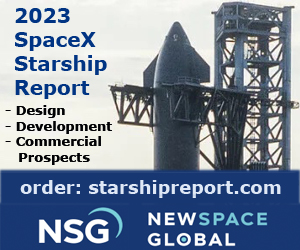Artemis 2 will fly the next Canadian into space in November 2024, boosting someone from our country to the Moon for the very first time.
NASA officially confirmed the launch date in a press conference on Tuesday (March 7) focused on the “lessons learned” from the highly successful launch of last year, Artemis 1. The Artemis 2 crew has not yet been named, but will likely be made public in the late spring.
Canada’s participation in this historic mission comes through our contribution of Canadarm3, which is being built by MDA on behalf of the Canadian Space Agency. MDA’s robotics contribution will fund future astronauts missions in Artemis and to the International Space Station, much like Canadarm, Canadarm2 and Dextre did for generations of astronauts before.
Canadarm3 will be installed on NASA’s Gateway lunar space station to support future Artemis missions, but that will be much later in the decade. The short-term focus by NASA is safely readying systems for Artemis 2 and, if possible, to bring humans to the surface with Artemis 3 in 2025 (pending readiness of the spacecraft and spacesuits, among other items.)
The Artemis program began with Artemis 1, which was a pathfinder mission in November and December 2022 to test nearly every major system that will be required for Artemis 2. Items it tested included the Orion spacecraft, Space Launch System rocket, ground systems, team processes and numerous other technical items. No humans rode on that mission, although three mannequins were on board to measure acceleration and radiation.
The major objectives of Artemis 1 were met, NASA officials emphasized on Tuesday. Orion safely launched atop the untested Space Launch System rocket on Nov. 16, flew for about 25 days in deep space and splashed down in the Atlantic Ocean as planned on Dec. 11. The spacecraft flew further in space than any other human-rated spacecraft, reaching 432,210 km (268,563 miles) from Earth on Nov. 28 – beyond the distance of Apollo 13 in April 1970, which had three astronauts on board.
At this point the team is working on only minor issues, like unexpected charring on the heat shield, but all remains on track for assembly of Artemis 2. The core stage is being assembled. Testing of the service module and crew module is ongoing. An integrated service module acoustic test is expected to complete tomorrow (March 8), and the crew module will soon finish testing of matters like communications and thermal cycling. Emergency egress systems (not originally required for Artemis 1) will go through a series of tests this summer, including integrated tests with the crew atop the launch vehicle.
Some of the biggest changes will come to launch infrastructure and pre-launch procedures to avoid the many delays of Artemis 1, and the unexpected damage the Space Launch System caused during launch. Hardening requirements will likely be put in place to the elevators at the launch site to avoid the doors being blown off, as what occurred on Nov. 16, for example.
A new and larger 1.4-million gallon liquid hydrogen tank will also be installed soon, to decrease the time between future launch attempts (as leaks and issues with the hydrogen system were part of what made the debut launch so difficult.) NASA also alluded to changes in software automation during pre-launch along with launch countdown procedures, but provided few specifics.
“We are doing due diligence in terms of looking through every piece of data across the board –[like] images and videos that we extracted from the spacecraft, and other assets from Artemis 1 – and we are applying that to ensure that we can fly the crew safely on Artemis 2,” Howard Hu, Orion program manager, said during the press conference.
Artemis 3’s 2025 landing timeline has more uncertainty to it, said Jim Free, associate administrator of exploration systems development at NASA. The lander is not yet ready, for example, as the agency is depending on SpaceX’s Starship to be ready.
Starship has yet to conduct a single spaceflight but may be launching as soon as March, pending certification from the Federal Aviation Administration. Starship would perform an orbital flight test at the least ahead of conducting the moon launch for NASA, but it is unclear if more testing would be required; the spaceship has been grounded for nearly two years awaiting FAA certification on the environmental process and the action items arising from a 2022 review.
Another major issue is spacesuits. At first, NASA pledged to take the helm of spacesuit development, but numerous technical issues and delays arose with the project – enough to warrant a 41-page report in 2021 with the agency’s Office of the Inspector General.
The agency thus outsourced the work instead to teams led by Axiom Space and Collins Aerospace in 2022. Free said there are certification reviews and other developments that must take place before these spacesuits are ready.
While NASA is still aiming for landing Artemis 3 in late 2025, Free acknowledged “the nature of trying to land people on the moon” will require “significant developments that have to occur.”
Beyond Artemis 3, funding grows uncertain, he added. The United States is about to begin its 2024 fiscal year budget process that will include requests for future missions, Free said. The agency is building hardware today for Artemis 4 and 5 and is beginning to order items for 6. Timelines for those future missions will depend on funding, he emphasized: “We always work to support the President’s budget, which bounces a lot of priorities across the whole government.”
 SpaceQ Space news and analysis.
SpaceQ Space news and analysis.




